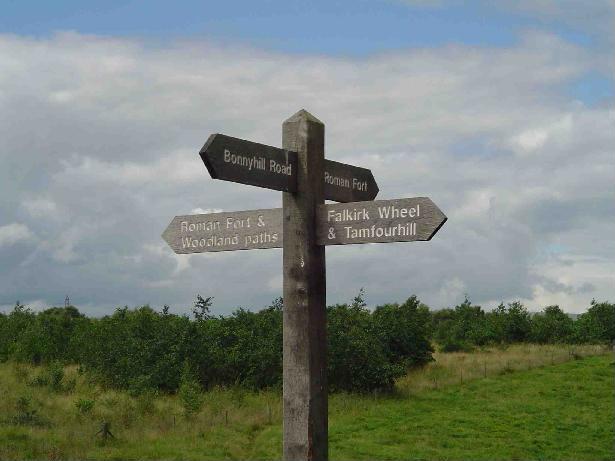
|
So,
all we knew when we set out was that the Roman
fort was somewhere behind the Falkirk Wheel.
Naturally, that was our starting point.
This is where we met a lovely old local fellow,
who I asked directions from. He pointed us
in the right direction, and after he told us
that he had never actually been there, I
suggested that he should visit as well.
Anyway, we followed a path and eventually came
upon this sign. I just thought it was
funny how something almost 2000 years old could
be located so near to something as new as the
Wheel. I was more amazed at the fact that
someone who had lived there his whole life had
never bothered to visit the place.
Naturally, we took the less-beaten path to the
fort. Luckily, we didn't get
lost...really! |
|
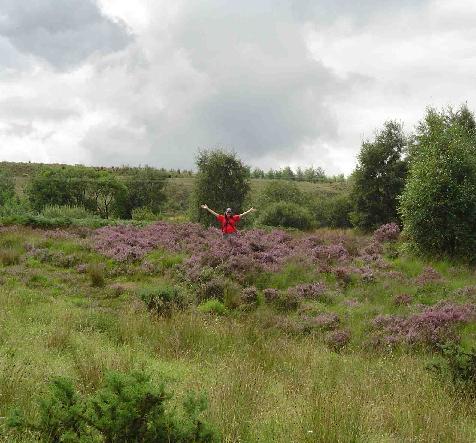
|
On our
lovely journey down the woodland path, I finally
found my heather on a hill. I was
beginning to think the whole heather thing was
just a myth, but luckily I was proven wrong. |
|
|
The
fortress itself was quite impressive.
Although the stone structures were long gone,
you could still see where the buildings stood.
This was just one of the many fortresses along
the Antonine Wall. The fort was excavated
in 1902-3, 1932, and 1957-61. It was a
small fortress, covering only about one acre.
Inscriptions discovered during one of the
excavations indicate that the Rough Castle
fortress was the base of the Sixth Cohort of
Nervians. These were a people who once
lived in Northern France, but were conquered and
subjugated by the Romans under Julius Caesar 200
years before the wall and fortress were built.
|
|
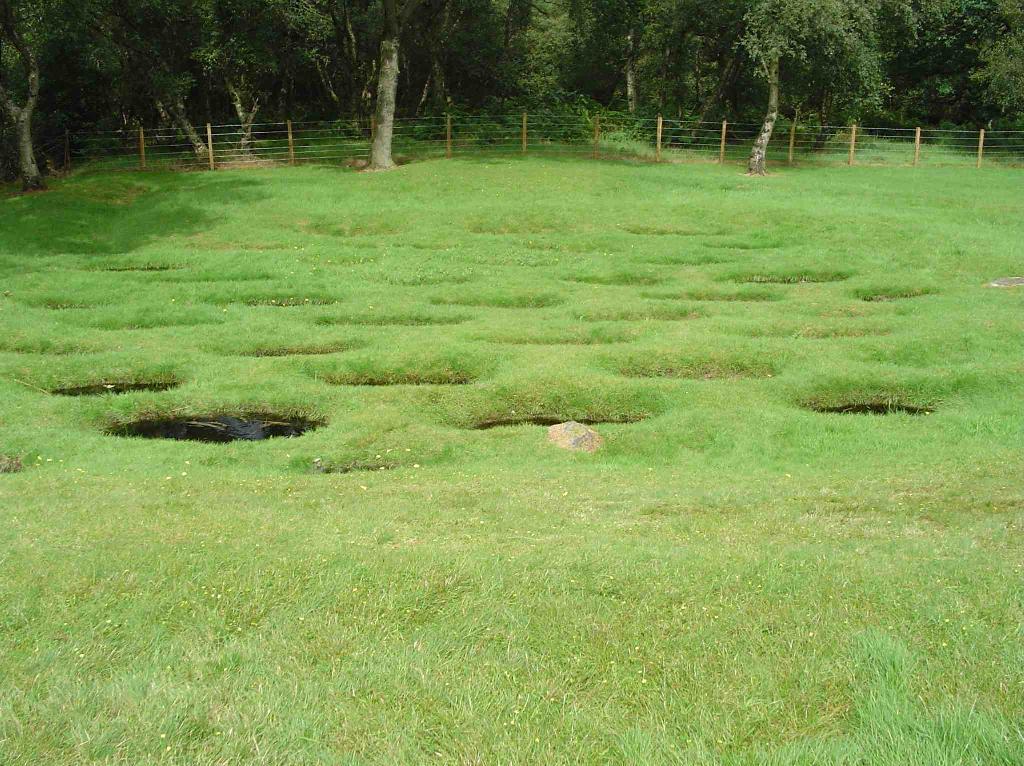
|
The northern defences were one of the most
distinguishable features of the fortress.
These pits were excavated in 1903 and kept open.
Originally, there were ten rows with about 20
pits each. They were about three feet deep
and held sharpened stakes in their depths.
They were then concealed with brushwood.
The intention of the pits, called lilia
by Roman soldiers, was to surprised the
unsuspecting attackers, who would fall into them
without warning, becoming impaled on the stakes.
These pits were located outside the fort walls,
on the northern side of the Antonine Wall. |
|
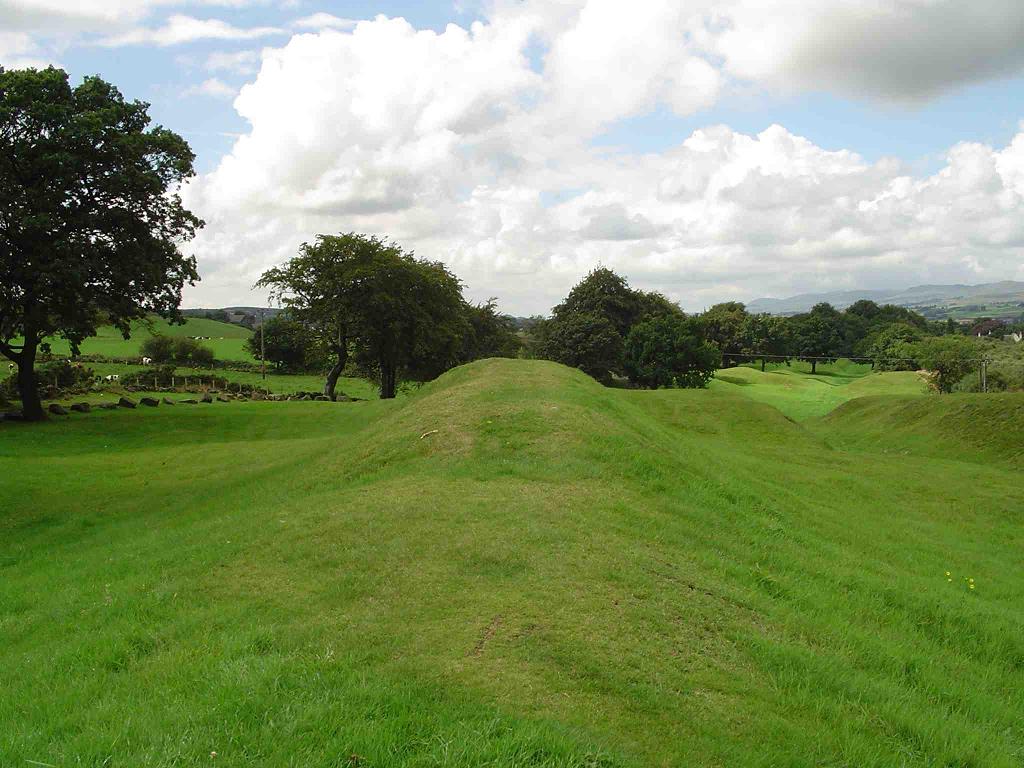
|
Here,
you can clearly see the ridge that was once the
Antonine Wall. Unfortunately, it is not in
nearly as good condition as Hadrian's Wall, far
to the south. The Antonine Wall was built
in the 140s AD by the Romans under Antonius
Pius. It ran for forty miles, from Bo'ness
on the Forth to Old Kirkpatrick on the Clyde.
The Romans only held it for about 20 years, at
which point they retreated to Hadrian's Wall.
|
|
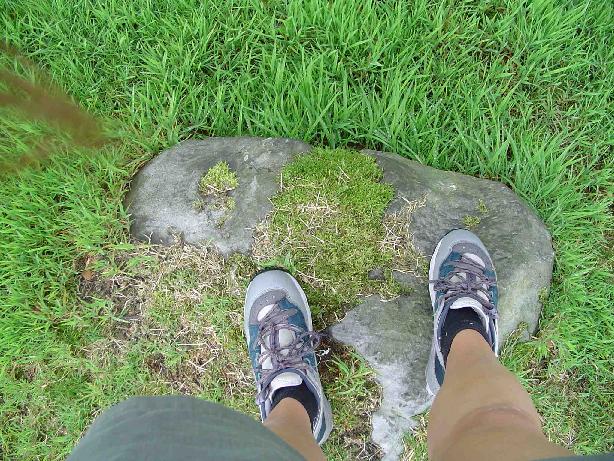
|
Here's
a pic of me standing on one of the few remaining
stones from the roman fort and wall.
Farmers just loved carting off stones to build
walls of their own... To keep in the cows,
not keep out the barbarians from the north. |
|
|




